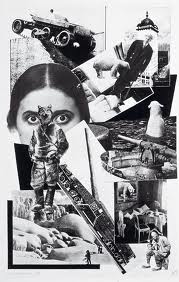1) Why did Garry Winogrand take photographs?
Garry Winogrand was an
American street photographer known for his portraiture in the mid-20th
century. He took photographs to see what the world look like in photographs.
2) Why did “citizens evolve from blurs to solid flesh”?
At the beginning of developing photography the technology
wasn’t good enough to capture life on the street. It moved too fast for the long
exposure time which was necessary. The first street scenes were set up. After
some time technology improved and “citizens evolve from blurs to solid flesh”.
3) What was/is the “much misunderstood theory”?
The much misunderstood
theory was/is decisive moment assigned to Henri Cartier-Bresson. He was a French photographer considered to be
the father of modern photojournalism. In 1952 he published a book called ,,The
decisive moment’’.
4) Who was the godfather of street photography in the
USA?
Garry Winogrand was the
godfather of street photography in the USA.
5) Who was Paul Martin and what did he do?
Paul Martin was a British photographer. In 1896 he brought a camera
to the beach, hiding it in a paper bag. He photographed Victorians of that time
relaxing by the Yarmouth seaside.
6) Who said “When I was growing up photographers were
either nerds or pornographers”?
Edward Ruscha
7) Why does William Eggleston photograph in colour?
Eggleston’s reputation
rests on colour photographs that he took
from early 70s onwards. His photographs were published in the book called
,,William Eggleston’s Guide’’. He calls his pictures “democratic” adding that
he is at “war with the obvious”. In his work he tries to capture the real world
and colour describes more than black and white, it is more dominant. To some
his photos are boring, disturbing and indiscriminate but to the others
exceptional and beautiful.
8) What is William Eggleston about?
He calls himself a
photographer who photographs the life today. He comes across hard to
communicate and it difficult to talk with him about his own work. The meaning
of many of his photographs have been left unexplained.
























